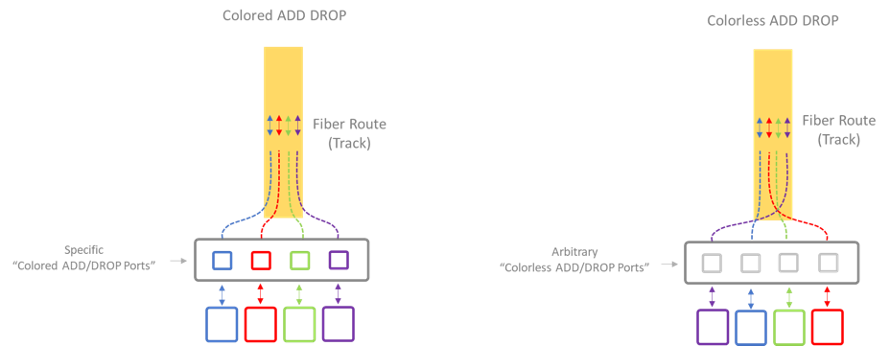Flexible, Intelligent CDCF Networking
By: John Nishimoto

As bandwidth continues its exponential growth, service providers must adapt their networks to accommodate the ever-increasing throughput demand. As data moves closer and closer toward the end user, multiple 100G circuits to edge data centers are the new norm, while 400GbE services will become available to more and more content delivery network operators over the next couple of years.
To keep pace with the ever-growing complexity, incorporating colorless, directionless, and contentionless functionality in flex-grid deployments (CDCF) is essential to effectively manage and operate super-high bandwidth networks. CDCF provides design flexibility for network architects and capacity growth for network planners. Pragmatically, incorporating CDCF in an economic manner while also interoperating with legacy systems is key.
The core building blocks with all fiber networks are optical add-drop multiplexors which, as the name implies, enable a wavelength to be added (inserted), dropped (accessed), or passed through (bypassed) at the network node. Initial generations of optical add-drop multiplexors were hard-wired with every change requiring manual intervention, resulting in more touches and limited routing options. Today’s reconfigurable optical add-drop multiplexers (ROADMs) provide software-enabled control and configuration changes, yielding more efficiencies and flexibility.
ROADMs are used to steer specific wavelengths from one fiber route to another fiber route. Where previous generations required the use of expensive optical-to-electrical-to-optical (OEO) regeneration (or, back-to-back transponder regeneration), this switching can now be done in an optical-only domain. The optical-only paths of these transparent networks, commonly referred as express routes, eliminate OEO regeneration, which equates to fewer equipment elements and lower overall costs.
Further expanding on these attributes, the newer generation of optical transport technology introduces colorless, directionless, contentionless, flex-grid (CDCF) add-drop functionality. CDCF greatly adds to the capacity, design flexibility, and operational efficiency of the network. To help understand these CDCF benefits, here are some simplified descriptions with an analogy or two thrown in for good measure.
Colorless ADD/DROP
Colorless ADD/DROP enables any wavelength, regardless of color or frequency, to be connected to any ADD/DROP port at a node location. In the old days, each specific ADD/DROP port was “hard coded” to a specific color, meaning the wavelength of the transponder had to be tuned to exactly match that specific port.

Figure 1: Colorless ADD/DROP
(click to enlarge)
Using a train station analogy, a “blue train” wanting to access the track (fiber route) could only access the track by entering through a specific “blue platform” (or blue port) of the train station (node). However, with colorless ADD/DROP, each physical ADD/DROP port is software tunable to match the color and frequency of the incoming wavelength. Thus, the platforms at the station are now color independent. The train comes into the station, and the ROADM adjusts the platform (port) configuration to match the train’s color. This solution simplifies network planning and eliminates the need for technicians to physically reconfigure switches—resulting in time savings and lower operational costs.
Directionless ADD/DROP
Originally the ADD/DROP structure (see image on next page) was “directioned,” which meant that any traffic (trains) that were added or dropped off at a train station had to come from a specific route (track). Thus, trains coming in and going out of a station




















